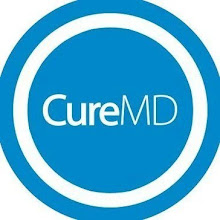The last few years have been monumental for the healthcare
in the US. With the introduction of the American Reinvestment and Recovery Act
(ARRA), the government laid down the foundation for a new structure in order to
improve healthcare delivery.
EMRs has always been on the
forefront, taking most of the fire. The government along with numerous
healthcare professionals believes in the value of healthcare automation.
However,
EMRs are merely
facilitators while physicians are still responsible for delivering quality
healthcare.
With an estimate of $6600 in healthcare costs being spent on
an individual per annum, the effectiveness of the ARRA is instrumental in
re-shaping the future of healthcare. “The government cannot afford any hiccups.
We are all too far invested in this for it not to work.” comments a healthcare
IT executive. “$6600? I don’t see it. Where is it going? You step out right now
and look around you tell me if you can spot one individual that had 6600 spent
on their health, one individual.” remarked a construction worker from New
Jersey, during an independent survey.
The Meaningful Use requirements provide an effective roadmap
for delivering quality healthcare. Its objective is to ensure that physicians
learn how to effectively utilize EMRs and improve healthcare delivery. CMS
introduced this exercise to help physicians realize what an
EMR
is capable of and how it adds to their care quality.
Likewise, the Affordable Care Act reforms have resulted in
better EMR adoption rates. The
government believes that there is at least $300 billion to be saved through
standardization of health information technology. However, despite the expected
benefits, there is still lot of skepticism surrounding EMRs. Many physicians
believe that EMRs in fact do not add
to practice productivity, but instead slow them down while increasing their
overheads.
In a recent study by Danny McCormick and David Bor of Cambridge
Health Alliance and Stephanie Woolhandler and David Himmelstein of CUNY School
of Public Health indicated that EMRs may actually increase the frequency of
tests ordered by physicians. More than 28,700 of patient visits and nearly
1,200 doctors were surveyed to determine the outcome. The study shows that
physicians utilizing EHRs were 5% more likely to order imaging, rather than
doctors who did not.
Danny McCormick believed that it was important to point out
the contrast of the actual findings with the commonly constructed belief of
EMRs decreasing health costs. However, he went on to state that it is
attributable to the enhanced interoperability provided by EMRs that doctors can expect to get results faster and can easily
view them on their screens.
Dr. David Blumenthal, who served as the national coordinator
for Health IT at the Department of Health and Human Services from 2009-2011,
pointed out that the study represents order of tests and not costs. He went on
to state that the study does not take into account the overall impact of EHRs
and accumulative healthcare costs. “The study doesn't look at the benefits for
quality of care at all. It's possible that the use of tests by some of the
doctors could have avoided other costs. This study has no way of assessing the
overall implications of the behavior that it's finding.”
Dr. Farzad Mostashari who is the National Coordinator for
Health IT also voiced similar concerns in his reply. He believes that the study
showed little evidence and did not consider the impact of EMRs in improving
healthcare delivery. He also pointed out that due to the nature of the study it
was not designed to answer questions about cost and quality. “Many other
variables that could affect physician behavior could not be examined in this
study, including having a sicker patient population, level of physician
training, approach to defensive medicine, and, importantly, financial
arrangements.”
The
EMR is a technology that compels change and as long as it is resisted, its
potential will remain muted.
Source: http://curemd.wordpress.com/2012/05/30/emr-the-untold-story/






